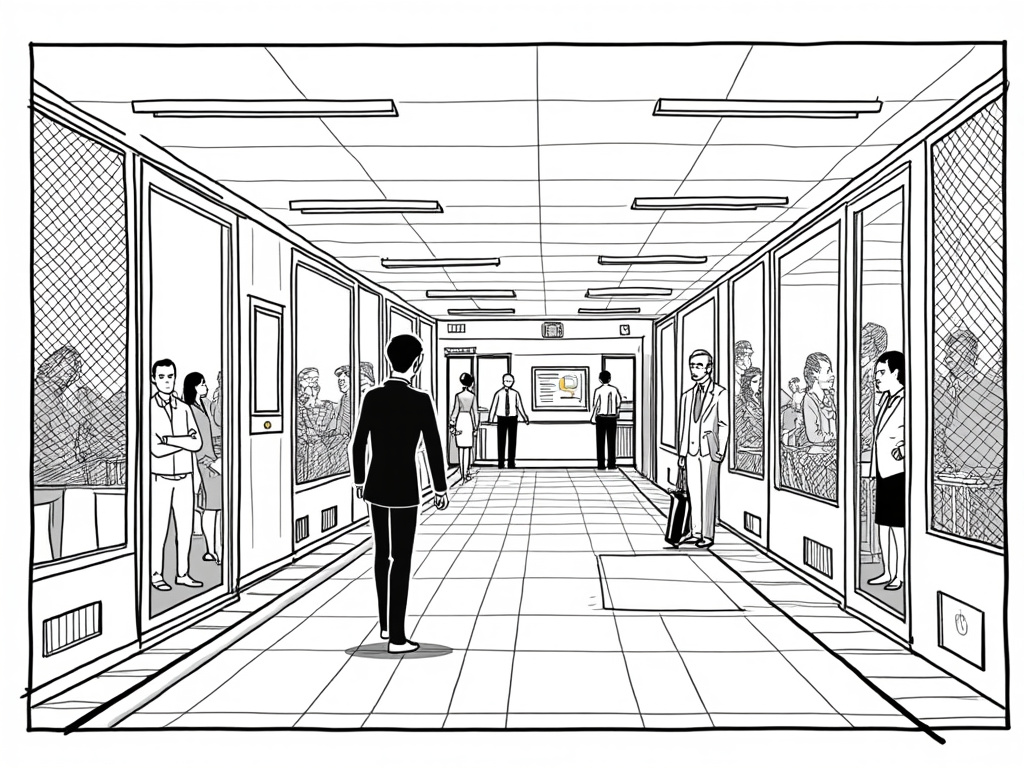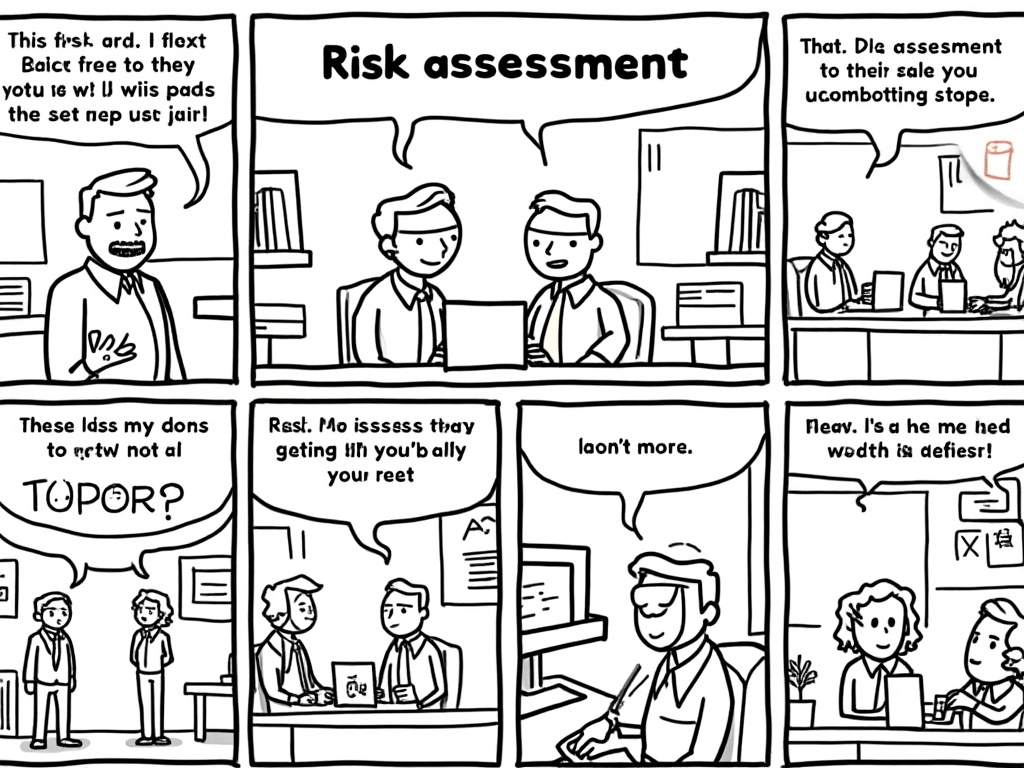
Border Zone Property Acquisition: Strategic Guide to Navigating Restricted Areas
Reading time: 12 minutes
Table of Contents
Understanding Border Zone Property Restrictions
Ever found yourself captivated by that picturesque property near an international boundary, only to discover it comes with a labyrinth of special regulations? You’re not alone. Border zone property acquisition represents one of real estate’s most complex frameworks—where national security concerns directly intersect with property rights.
Let’s cut through the complexity: Border zone properties aren’t merely subject to standard real estate regulations; they exist within a specialized legal ecosystem designed to protect national interests while balancing property ownership rights.
What Constitutes a Border Zone?
Border zones typically encompass land within a specified distance from international boundaries. These distances vary significantly:
- Russia: Maintains one of the world’s most extensive border zones at 10km from land borders
- European Union: Generally between 3-5km, with variations by member state
- United States: Operates with a 100-mile (160km) “border search exception zone”
- Mexico: Restricts foreign ownership within 50km of coastlines and 100km from land borders
The practical reality? These aren’t simply arbitrary lines on maps—they represent areas where heightened scrutiny meets strategic importance, creating unique property acquisition dynamics you won’t encounter elsewhere.
The Strategic Value Proposition
Despite regulatory complexities, border zone properties offer distinct advantages:
- Cross-border business opportunities with access to multiple markets
- Often lower acquisition costs compared to non-restricted areas
- Potential for tourism development in scenic border regions
- Strategic positioning for import/export operations
Consider this perspective: While most investors shy away from regulatory complexity, savvy property investors recognize that understanding specialized frameworks often reveals untapped opportunities others miss entirely.
Legal Frameworks Across Different Countries
The regulatory landscape for border property acquisition varies dramatically across jurisdictions. Understanding these differences isn’t just academically interesting—it’s the foundation of a successful acquisition strategy.
Comparative Regulatory Approaches
| Country/Region | Border Zone Width | Foreign Ownership Restrictions | Special Permit Requirements | Processing Timeline |
|---|---|---|---|---|
| United States | 100 miles (160km) | Permitted with CFIUS review for sensitive areas | Security screening for certain properties | 3-6 months |
| European Union | 3-5km (varies) | Generally permitted with member state variations | Military approval in strategic areas | 2-4 months |
| Mexico | 50km (coast)/100km (land) | Foreign ownership via fideicomiso (trust) only | Foreign Affairs Ministry approval | 4-6 months |
| Russia | 10km | Heavily restricted; case-by-case approvals | FSB security clearance required | 6-12 months |
| Australia | No specific border zone | Foreign Investment Review Board approval | National security assessment | 2-3 months |
Navigating Security Concerns vs. Property Rights
At the heart of border zone regulations lies a fundamental tension between national security interests and private property rights. Countries approach this balance differently:
Security-Prioritizing Approach: Nations like Russia implement stringent oversight where property acquisition requires extensive background checks, security clearances, and documented justification for ownership.
Economic-Balancing Approach: Countries including Mexico utilize legal structures (like the fideicomiso trust system) that enable foreign investment while maintaining technical sovereignty over sensitive border lands.
Risk-Based Assessment: The United States employs targeted scrutiny through the Committee on Foreign Investment (CFIUS), focusing intensively on properties with strategic implications while maintaining a relatively open approach to standard residential purchases.
The strategic insight? Successful border zone acquisition isn’t about finding loopholes—it’s about understanding how to legitimately position your investment within the security framework each country has established.
Expert Perspective: “Border zone regulations aren’t designed to prevent property ownership but to ensure it aligns with broader national interests. The successful buyer approaches these regulations as a roadmap rather than an obstacle course.” — Dr. Elena Korosteleva, Professor of International Politics, University of Kent
The Acquisition Process: Step-by-Step
Navigating border zone property acquisition requires methodical preparation and strategic execution. Let’s break down the process into actionable stages:
Pre-Acquisition Planning
- Strategic Jurisdiction Selection: Rather than finding a property and then dealing with regulations, first identify border zones with regulatory frameworks aligned with your ownership capabilities.
- Preliminary Eligibility Assessment: Determine whether you qualify as an eligible purchaser (individual, business entity, nationality considerations).
- Documentation Preparation: Begin assembling personal identification, financial records, and business credentials months before attempting acquisition.
- Security Pre-Clearance Research: Understand what background elements might trigger enhanced scrutiny in your target jurisdiction.
Pro tip: The pre-acquisition phase typically requires 2-3 times longer for border properties than standard real estate transactions. Build this extended timeline into your investment planning.
Application and Approval Process
The formal application process generally follows this sequence:
- Initial Declaration of Intent: Formal notification to relevant authorities of your interest in acquiring border zone property
- Property-Specific Security Assessment: Evaluation of the specific property’s strategic implications
- Background Verification: Investigation of the potential owner’s background, source of funds, and potential security concerns
- Conditional Approval: Preliminary authorization often accompanied by ownership conditions or limitations
- Final Clearance: Definitive approval permitting the transaction to proceed
Consider this practical scenario: When James K. sought to purchase a vineyard property along the California-Mexico border, his application process extended to 8 months despite having all documentation prepared. The key lesson? His advance consultation with both a specialized real estate attorney and former border patrol property liaison enabled him to anticipate and address security concerns proactively rather than reactively.
Visualization: Average Processing Times by Application Stage
Common Challenges and Strategic Solutions
Border zone property acquisition presents unique obstacles that require strategic planning to overcome. Let’s examine the most significant challenges and their solutions:
Navigating Opaque Regulatory Frameworks
Challenge: Many border zone regulations are deliberately non-transparent or subject to interpretation by multiple agencies with overlapping jurisdiction.
Strategic Solution: Develop relationships with specialized intermediaries who regularly navigate these systems. This includes:
- Attorneys specializing specifically in border property transactions (not just general real estate)
- Former government officials from relevant regulatory bodies
- Local fixers with established relationships in border communities
Practical Application: When Maria L. sought to purchase a commercial property along the US-Canada border, she encountered conflicting guidance from three separate agencies. Her breakthrough came from engaging a specialized attorney who had previously worked for U.S. Customs and Border Protection, who identified a regulatory pathway that satisfied all parties’ requirements.
Shifting Security Landscapes
Challenge: Border security protocols can change rapidly in response to geopolitical developments, potentially affecting property rights or usage permissions after acquisition.
Strategic Solution: Build adaptability into your ownership structure:
- Incorporate contingency clauses in purchase agreements addressing potential regulatory changes
- Consider flexible entity structures that can adapt to changing nationality requirements
- Maintain regular communication channels with relevant security agencies
- Document all property improvements and modifications meticulously to demonstrate compliance
Warning: According to a 2022 study by the International Property Rights Index, 73% of border zone property disputes arise not from the initial acquisition process but from post-purchase regulatory changes that owners failed to anticipate.
Post-Acquisition Compliance Maintenance
Challenge: Border properties typically require ongoing compliance activities and periodic re-certification that standard properties don’t demand.
Strategic Solution: Implement a systematic compliance management approach:
- Create a regulatory calendar tracking all reporting deadlines and renewal requirements
- Establish relationships with local authorities through community engagement
- Consider joining or forming border property owner associations to share compliance resources
- Implement property technologies that facilitate regular documentation of compliance activities
The strategic insight here isn’t just about overcoming obstacles—it’s about recognizing that ongoing relationship management with regulatory authorities often proves more valuable than technical compliance alone.
Real-World Applications: Case Studies
Theory without application has limited value. Let’s examine two contrasting case studies that illustrate both successful navigation and problematic pitfalls in border zone property acquisition.
Case Study: The Arizona-Sonora Cross-Border Development
Background: In 2018, a multinational development consortium sought to create an integrated commercial-residential development spanning both sides of the Arizona-Sonora border.
Approach: Rather than treating border restrictions as obstacles, the development team incorporated them as foundational design elements by:
- Creating separate but complementary ownership structures on each side of the border
- Proactively engaging security agencies in the design phase
- Incorporating security technologies that addressed border patrol concerns
- Establishing a cross-border cooperation foundation that included government representatives
Outcome: The development received approval in 14 months—significantly faster than the typical 24-36 months for comparable projects. It now serves as a model for integrated border zone development.
Key Lesson: Security concerns become competitive advantages when addressed proactively rather than reactively.
Case Study: The Baltic Coastal Property Dispute
Background: In 2020, a European investment group acquired a significant coastal property in the Baltics, 4.2km from a sensitive military border zone.
Critical Mistakes:
- Relied on general real estate attorneys without border zone expertise
- Failed to disclose certain non-EU investors in the ownership structure
- Proceeded with preliminary development without security clearance
- Attempted to negotiate retroactively when issues emerged
Outcome: The property was placed under a development freeze for 18 months, resulting in approximately €3.7 million in carrying costs and lost opportunities. Ultimately, the group was required to restructure ownership and pay significant compliance penalties.
Key Lesson: Border zone acquisition requires specialized expertise and complete transparency from the outset—remediation is exponentially more costly than proper initial compliance.
Statistical Context: According to data from the International Border Zone Development Association, properly structured border zone acquisitions typically cost 15-22% more in compliance and administrative expenses than comparable non-border properties, but those attempting to minimize these costs initially face remediation expenses averaging 340% higher when issues emerge later.
Future-Proofing Your Border Property Investment
Border zones represent dynamic regulatory environments that reflect evolving security landscapes. For long-term investment success, forward-thinking strategies are essential.
Emerging Trends Reshaping Border Zone Regulations
Several key developments are influencing how border property regulations will evolve:
- Technology Integration: Advanced surveillance technologies are enabling more precise security monitoring, potentially allowing more flexible property usage while maintaining security protocols.
- Climate Migration Pressures: Increasing population movements due to climate factors are driving enhanced border security measures in previously less-restricted areas.
- Cross-Border Economic Initiatives: Regional economic development programs are creating specialized zones with modified regulatory frameworks to encourage investment.
- Geopolitical Realignments: Shifting international relationships are resulting in both tightening and loosening of specific border restrictions based on bilateral relations.
Adaptive Investment Strategies
To position border zone investments for long-term success:
- Flexible Ownership Structures: Consider utilizing holding companies or trust arrangements that can adapt to changing nationality requirements or ownership restrictions.
- Phased Development Approaches: Structure development plans in modular phases that can be adjusted as regulatory environments evolve.
- Security-Compatible Design: Incorporate security considerations into property design from the outset, potentially turning compliance into a value-added feature.
- Community Integration: Develop meaningful connections with local border communities, as they often influence how abstract regulations are practically interpreted.
The strategic insight here: Border zone property success is less about finding the perfect property under current regulations and more about creating adaptive ownership frameworks that can evolve alongside changing security priorities.
Frequently Asked Questions
How do I determine if a property falls within a restricted border zone?
Border zone designations aren’t always clearly marked on standard property records. The definitive approach involves contacting the relevant national security agency (such as Department of Homeland Security in the US, or the Border Guard Service in EU countries) with the property’s exact coordinates. Many countries now offer online pre-verification tools, though these should be considered preliminary assessments rather than definitive determinations. For properties within 5km of any international boundary, always assume border restrictions apply until definitively confirmed otherwise by official sources.
Can foreign entities use corporate structures to bypass border zone restrictions?
While corporate structures can sometimes provide pathways to border zone ownership, they rarely “bypass” restrictions entirely. Most modern border security frameworks include beneficial ownership assessment that looks beyond corporate entities to identify ultimate controlling interests. The more strategic approach is not circumvention but proper structuring—creating transparent ownership arrangements that satisfy security concerns while optimizing investment flexibility. Specifically, consider joint ventures with domestic entities, special purpose vehicles with clearly defined objectives, or management contracts that separate ownership from operational control.
What happens if border zone regulations change after I’ve acquired a property?
Regulatory changes to border zones typically include grandfather provisions for existing owners, though these often come with modified compliance requirements rather than blanket exemptions. Your best protection involves: 1) Documenting meticulous compliance with all regulations in effect at the time of purchase, 2) Maintaining active relationships with regulatory authorities, 3) Including regulatory change provisions in your initial purchase agreement, and 4) Considering political risk insurance for significant investments. According to border property legal experts, owners who maintain proactive compliance programs experience 76% fewer disruptions during regulatory transitions than reactive property holders.

Article reviewed by Adrian Sokolov, Post-Soviet Industrial Assets | Revitalizing Manufacturing Zones, on May 15, 2025




